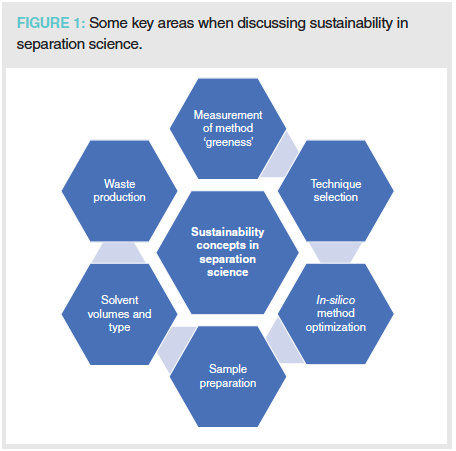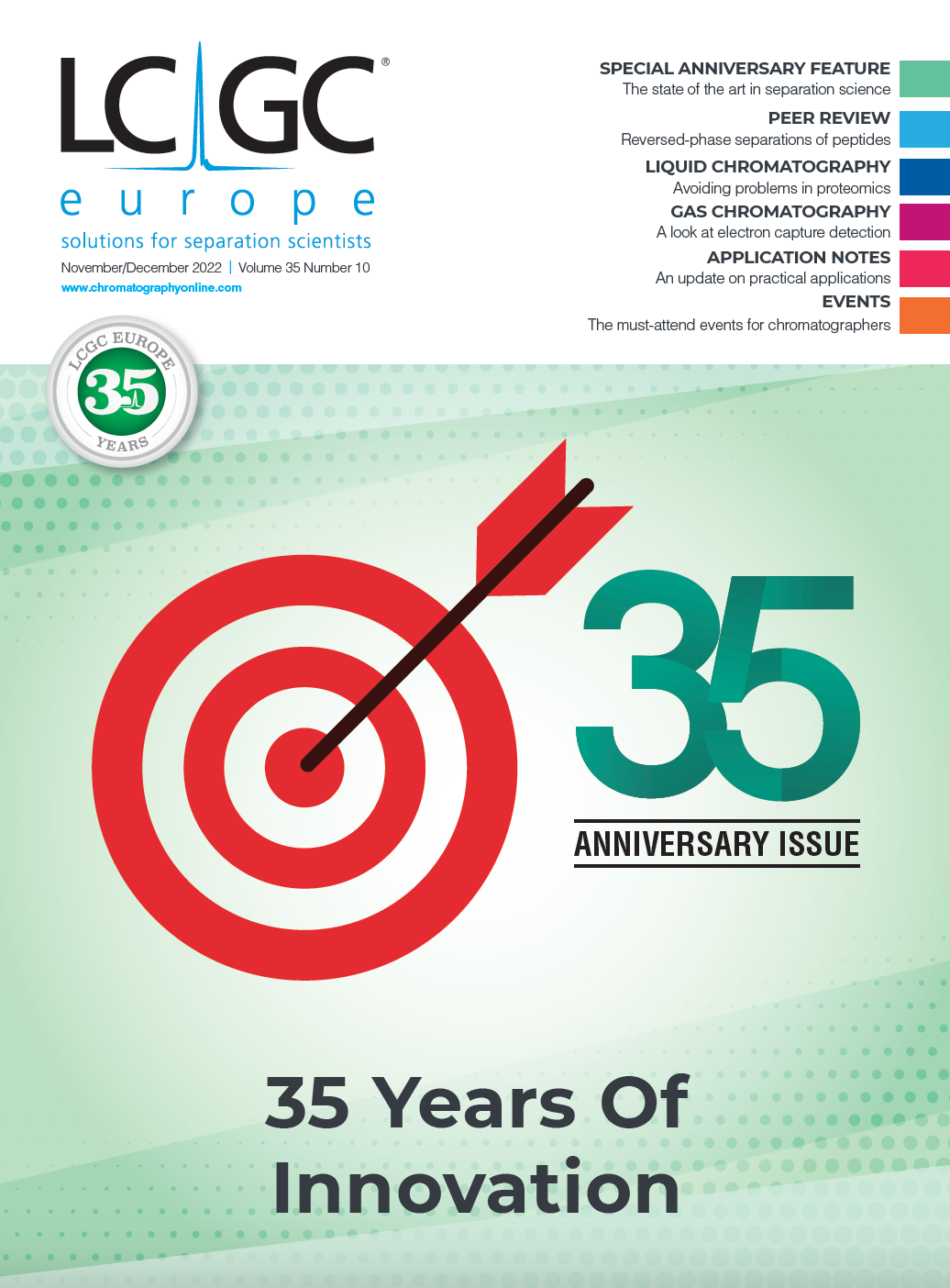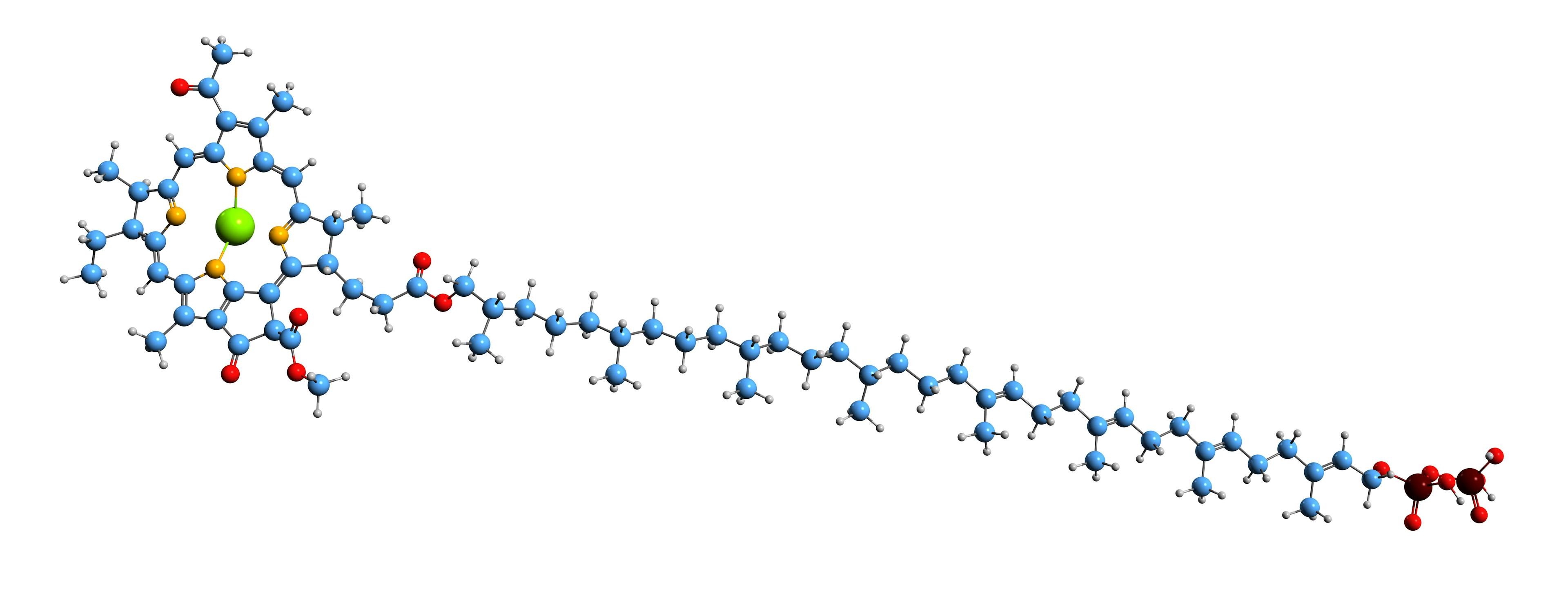Separation Science: The State of the Art: The Paradox of Sustainability in Separation Science
It has become increasingly clear in recent years that climate change has accelerated rapidly and poses an imminent threat to the global ecosystem. At the heart of this issue is the dramatic increases in greenhouse gases—carbon dioxide being the most prominent of these. While it may feel like a long stretch to suggest separation science is a significant contributor to this issue, some simple modifications to the way these measurements are approached can enable significant reductions in the waste generated and carbon dioxide produced during analyses.
As a starting point in discussing sustainability, Anastas and Warner’s seminal 12 rules for green chemistry can be considered as a substrate for analytical chemistry (1). Written in 1998, these rules provide a framework on how to improve the sustainability of various aspects of synthetic chemistry. While this cannot be discussed at length in this article, the concepts detailed in the chapter on reducing volumes (both organic solvents and water), using safer and more sustainable solvents, and increasing instrument efficiency are all within the scope of this discussion (see also Figure 1).

Let us start by considering how we know if our separation science method is “green”. A key focus area for chromatographic methods and sustainability is the organic solvents used in the mobile phases, as these can be a source of carbon dioxide in their synthesis and also in their destruction (typically incineration) after use as waste. There have been several approaches proposed for objective assessment of method greenness, for example, references 2 and 3. A recent example of this is the “analytical method greenness score” (AMGS) produced by the American Chemical Society Green Chemistry Institute (ACS GCI) (4). The AMGS tool provides a “traffic-light” scoring approach for liquid chromatography (LC) and supercritical fluid chromatography (SFC) methods based on (i) the energy an instrument uses (the analysis time of method and number of samples), (ii) the volume of solvent used (in the chromatographic method and sample preparation), and (iii) safety considerations for the solvent. The tool also highlights the aspects that are detrimentally impacting this score in these three areas. A free to access web interface has been produced to generate these metrics (www.acsgcipr.org/amgs/), and future updates are planned to include gas chromatography (GC) methods.
When discussing organic solvent volumes, four areas should be considered:
1. Reduction: Can a separation be scaled to smaller volumetric flow dimensions without impacting the separation? This will reduce the amount of organic solvent and high purity water used (access to the latter can be limited in some geographic locations).
2. Replacement: Can environmentally hazardous chemicals be replaced with more sustainable or safer options without impacting the measurement? For example, the replacement of acetonitrile with ethanol or acetone.
3. Removal: Can organic solvents be completely removed from the chromatographic method? For example, could techniques such as capillary electrophoresis or ion chromatography (IC) be used instead of reversed-phase chromatography?
4. Recycle: Mobile phases can also be recycled while running isocratic chromatographic methods. While difficult, is it possible to recover certain solvents from the sample diluent or unused/waste mobile phase, for example, ethanol or dimethyl sulfoxide (DMSO)?
In terms of point 1, the move to smaller chromatographic particle sizes in reduced volume column dimensions is an easily accessible and impactful approach. The use of ultrahigh-pressure liquid chormatography (UHPLC) instead of high performance liquid chromatography (HPLC) separations is a common example of this. Preserving the L/dp (column length/particle size) ratio to maintain efficiency (ensuring a scalable stationary phase is used with identical ligand and bonding density to preserve relative retention and selectivity) and volumetric flow scaling (many online tools are available to assist with this) can significantly reduce solvent use when moving to smaller column and stationary phase dimensions. It is not uncommon when moving from HPLC- to UHPLC-scale conditions to realize mobile phase savings in excess of 60%. Detrimentally, it is energetically easier to incinerate mobile phases rich in organic solvents than it is to incinerate those rich in water, but it is difficult to quantify this aspect of the mobile phase life cycle.
From a sustainability perspective, it is also important to minimize the number of experiments conducted during the development of a method. The use of in-silico modelling and prediction of analyte retention is very important to enable this. Once the column and mobile phase conditions are established (often through screening, or more recently, prediction of initial conditions based on analyte structure [5]), methods can often be optimized quickly in as few as two to four experiments (6).
The replacement of mobile phase solvents (point 2) can be challenging if a chromatographic method is already established and selectivity needs to be maintained. However, if developing a new method, then the use of methanol, ethanol, or even acetone (not all methods require UV detection!) could be utilized rather than acetonitrile (with ethanol, slightly increased column temperatures may be required to reduce mobile phase viscosity, which will impact system pressure and the usable flow rates). More sustainable and/or safer organic solvents can be chosen from the literature published by process chemists, for example, references 7 and 8.
The use of normal phase chromatography should be avoided whenever possible due to the high volumes of toxic or environmentally impactful organic solvents used. Normal phase chromatography was historically used for preparative-scale isolations, chiral separations, or retention of polar molecules. For the latter, hydrophilic interaction liquid chromatography (HILIC) has established itself as a key technique for the analysis of small and biomolecule (for example, glycan) separations. However, the main component of mobile phases used in this technique is typically acetonitrile, often in the order of 95% v/v, which produces significant volumes of organic waste. A greener technique that addresses these three areas is SFC. This techniques uses carbon dioxide as the primary component in the mobile phase and typically methanol as co-solvent (in volumes <50% v/v). While carbon dioxide is environmentally detrimental, if the gas is produced from a sustainable source, for example, recycled from the atmosphere, or possibly as a by‑product from chemical reactions, then the technique is unquestionably “greener” than many other chromatographic approaches.
While not fully addressing point 3, SFC provides reduced volumes of liquid waste. Alternatively, the use of capillary zone electrophoresis (CZE), or one of its numerous modes, all produce dramatically less waste, while providing a potentially beneficial and complementary separation methodology to chromatographic approaches. However, CE does have limitations, most notably detection sensitivity. Alongside this, the use of IC, which utilizes predominantly aqueous mobile phases, could provide a greener approach to analyzing certain classes of compounds.
Another area for consideration is sample preparation. As more efforts are made to reduce solvent volumes in liquid separations, then sample diluent volumes move further into focus. It is important that analysts have a fundamental understanding of key physicochemical parameters such as analyte pKa and Log P/D to optimize analyte solubility, alongside understanding of efficient instrumental processes to minimize the proportions of organic solvent used and the absolute volumes of the samples prepared (9). The use of automation to provide reproducible small volume sample preparation will be a key focus area in the future. Equally, the ability to analyze samples without any sample preparation using online analysis approaches (for example, online LC or vibrational spectroscopy such as near infra‑red) is another important future direction.
Ultimately, the use of LC as a measurement approach is broadly not green, and, arguably, spectroscopic or spectrometric approaches can provide more sustainable measurements. However, as chromatography often provides the optimal approach to generate measurement data—for example, due to reduced sample matrix interferences—the approaches outlined above can all be considered to reduce the environmental impact of these techniques. While the impact of reducing the environmental burden of separation science is modest compared to the aviation industry for example, I am reminded of the concept of “aggregation of marginal gains” (10). If multiple industries using separation science in any form can reduce their environmental footprint, then these small numbers can become significant and create a positive and sustainable impact.
References
1) P.T. Anastas and J.C. Warner, Green Chemistry: Theory and Practice (Oxford University Press, New York, USA, 1998).
2) L.H. Keith, L.U. Gron, and J.L. Young, Chem. Rev. 107, 2695–2708 (2007).
3) M. Cinelli, S.R.Coles, and K. Kirwan, Ecol. Ind. 46, 138–148 (2014).
4) M.B. Hicks et al., Green Chem. 21, 1816–1826 (2019).
5) P.R. Haddad, M. Taraji, and R. Szücs, Anal. Chem. 93, 228–256 (2021).
6) P. Kumar Sahu et al., J. Chromatogr. Biomed. Anal., 147, 590–611 (2018).
7) C.M. Alder et al., Green Chem. 18, 3879–3890 (2016).
8) F.P. Byrne et al., Sustain. Chem. Process 4, 7 (2016).
9) R.E. Majors, Sample preparation fundamentals for chromatography (Agilent Technologies, 2014).
10) https://www.choosefi.com/the-aggregation-of-marginal-gains/ (accessed 27 September 2022).
Paul Ferguson is an associate principal scientist in New Modalities & Parenteral Development, Pharmaceutical Technology & Development, Operations, AstraZeneca, Macclesfield, UK.

Characterizing Polyamides Using Reversed-Phase Liquid Chromatography
May 5th 2025Polyamides can be difficult to characterize, despite their use in various aspects of everyday life. Vrije Universiteit Amsterdam researchers hoped to address this using a reversed-phase liquid chromatography (RPLC)-based approach.
New Method Explored for the Detection of CECs in Crops Irrigated with Contaminated Water
April 30th 2025This new study presents a validated QuEChERS–LC-MS/MS method for detecting eight persistent, mobile, and toxic substances in escarole, tomatoes, and tomato leaves irrigated with contaminated water.
University of Tasmania Researchers Explore Haloacetic Acid Determiniation in Water with capLC–MS
April 29th 2025Haloacetic acid detection has become important when analyzing drinking and swimming pool water. University of Tasmania researchers have begun applying capillary liquid chromatography as a means of detecting these substances.
Prioritizing Non-Target Screening in LC–HRMS Environmental Sample Analysis
April 28th 2025When analyzing samples using liquid chromatography–high-resolution mass spectrometry, there are various ways the processes can be improved. Researchers created new methods for prioritizing these strategies.

.png&w=3840&q=75)

.png&w=3840&q=75)



.png&w=3840&q=75)



.png&w=3840&q=75)





















